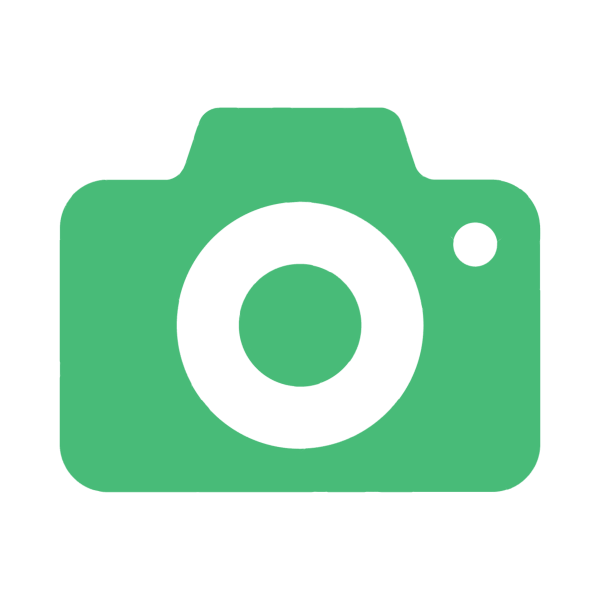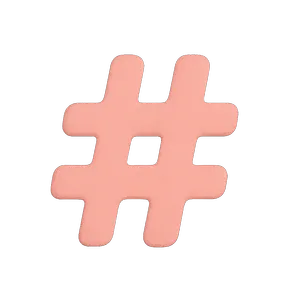Event lead generation has changed. The old approach of scanning badges and dropping business cards in a fishbowl feels dated because it is. Today’s attendees expect more than a sales pitch; they want an experience. The best way to get quality leads is to stop interrupting people and start inviting them into a moment so valuable they want to share their information.
This playbook breaks down the modern approach to event lead generation. We’ll cover the technology, tactics, and tracking needed to turn your event into a reliable engine for your sales pipeline.
Why Is Old-School Lead Generation Broken?
The old way of event lead generation is built on interruption. It’s about forcing your way into an attendee's busy day. Modern strategies do the opposite. They are built on invitation, creating something so interesting or useful that your ideal customer is naturally drawn to it. This simple shift from a transaction to a "happy exchange" is everything.
When you offer something genuinely fun or useful - like a unique digital souvenir - people are far more willing to share their information. This positions your brand as a creative partner from the very first interaction.
Here’s a quick look at how the two approaches stack up:
How Can I Generate Qualified Leads from Event Attendance?
You can get qualified leads by designing an experience that naturally filters for your ideal customer. Instead of just collecting names, you create an activation that attracts the right people and gives you valuable context about them. The goal is to learn who they are and what they need before the first follow-up email is ever sent.
This starts with creating a hook that is simply irresistible to your target audience. An AI-powered headshot booth at a professional conference, for example, offers real value and naturally attracts people who care about their professional image.
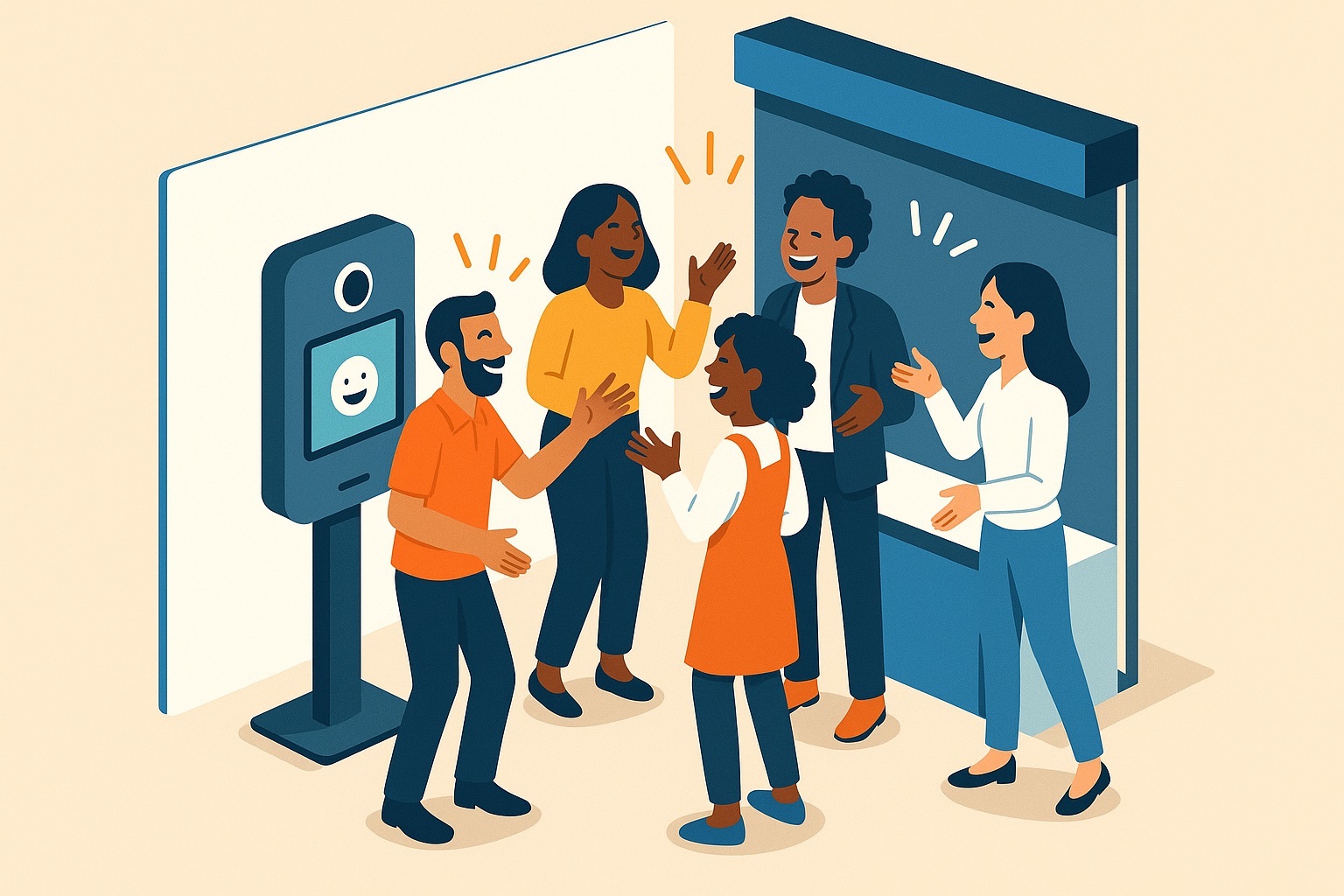
Strategies for Qualifying Leads in Real-Time
- Design for Your Ideal Customer: The look, feel, and promise of your activation should speak directly to the people you want to meet. If your experience is tailored to marketing VPs, you’re more likely to get leads from marketing VPs.
- Embed a Single, Smart Question: You can weave a quick qualifying question directly into the experience. Before an attendee gets their photo, a simple multiple-choice question can pop up: “What’s your biggest business challenge?” or “What’s your job role?”
- Track Engagement as an Indicator: The people who spend the most time at your activation or share their content are often your most enthusiastic prospects. Their active participation is a strong signal of interest.
The trade-off for higher-quality leads is often a lower total quantity. That’s a good thing. A list of 50 qualified, high-intent leads is far more valuable than 500 random badge scans. You can learn more about this approach in our guide to trade show lead generation.
What Technology Helps with Lead Capture at Exhibitions?
The best technology for lead capture is often software that turns a fun, interactive moment into a data collection opportunity. Modern tools like digital photo booths, AI-powered experiences, and interactive surveys are built to do this. They work because they offer a valuable exchange: attendees get a cool piece of content, and you get a clean, opted-in lead.
These tools are especially powerful because they are often web-based. This means attendees can use their own phones with a simple QR code scan - no app to download, no clunky hardware to manage. This makes the process fast and easy for everyone.
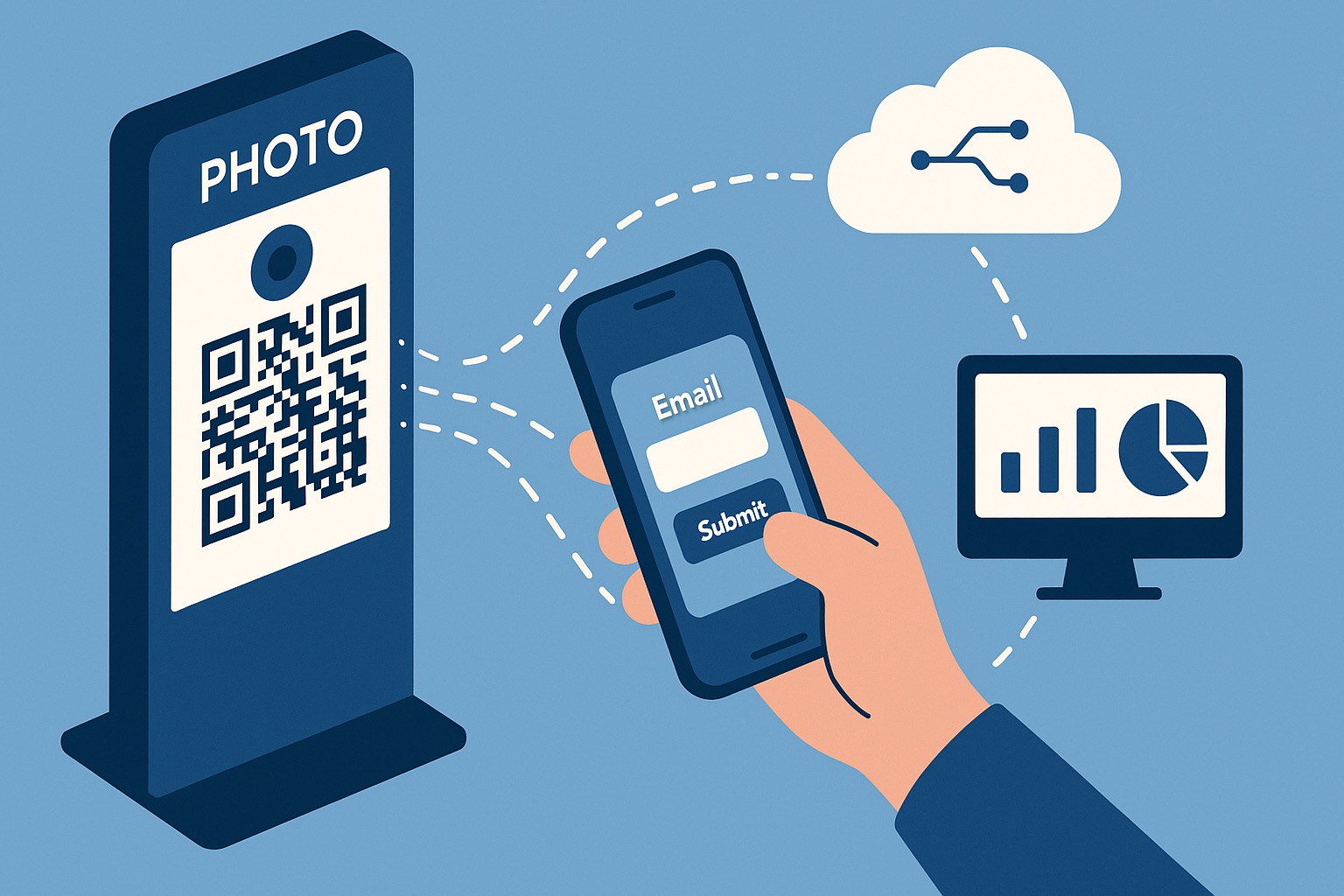
Key Lead Capture Technologies:
- Digital Photo & Video Booths: These are the workhorses of modern event lead gen. Guests take a branded photo, GIF, or video and enter their email or phone number to have it sent to them instantly.
- AI-Powered Experiences: An AI photo booth can take a simple selfie and transform it into a unique, on-brand image. The novelty makes the content highly shareable and acts as a powerful incentive for providing contact info.
- Integrated Surveys: Instead of a boring form on a clipboard, you can build a quick survey right into a digital experience. After a fun interaction, asking one or two questions feels natural and provides valuable qualifying data.
- CRM Integration: This is the most critical piece. Your lead capture tool should connect directly to your CRM (like Salesforce or HubSpot). This automatically sends new leads to your sales team, tagged with the event name, for fast follow-up.
This technology isn't just about collecting contacts; it's about starting a conversation. For a deeper look, you can explore what lead generation marketing is and how it works at live events.
How Do I Track Lead Generation Success at Events?
You can track your success by connecting your event activities to clear business metrics. This means looking past simple lead counts and measuring the actual quality and potential value of the pipeline you generated. To do this, you need to track how event leads move through your sales funnel and what it cost to get them there.
The first step is to ensure every lead captured at the event is tagged in your CRM. This lets you follow their entire journey, from that first interaction to a closed deal. This is the only way to accurately calculate your event's return on investment (ROI).

Key Metrics for Tracking Success:
- Cost Per Lead (CPL): This is a simple but powerful metric. Divide your total event cost by the number of qualified leads you generated. This tells you how efficient your event was at building your pipeline.
- Lead-to-Customer Conversion Rate: Track what percentage of the leads from your event eventually become paying customers. This is the ultimate measure of lead quality.
- Pipeline Value: Calculate the total potential revenue from all the sales opportunities generated by your event leads. This shows stakeholders the event's direct impact on future revenue.
- Return on Investment (ROI): The big one. The ROI of interactive displays and other activations is found by comparing the pipeline value (or closed revenue) to the total cost. If your event generated $50,000 in pipeline value and cost $10,000, your return is 5x, or 400% ROI.
Tracking these numbers gives you a clear, data-backed story to share. You’re no longer just saying the event "felt successful"; you’re proving it with numbers your finance team will understand.
For more insights, Snapbar's methods in experiential lead capture emphasize structured data collection alongside engaging interactions.
What's the Best Way to Follow Up with Event Leads?
The best follow-up is fast, personal, and helpful. A generic "Thanks for stopping by" email sent a week after the event is a waste of time. The connection you built in person is fragile. To keep the momentum going, your outreach needs to happen quickly and reference the specific, positive experience you shared.
This is where integrating your lead capture tech with your marketing automation platform is a huge advantage. As leads are collected, they can be instantly synced, triggering a pre-built nurture sequence while the event is still fresh in their mind.
Simple Framework for Better Follow-Up:
- Be Immediate: Aim to send your first follow-up within 24 hours. The goal is to reconnect while the memory of the event is still strong.
- Add Context: Don't just say you met at the event. Remind them of the specific interaction. An automated email that includes the branded photo or video they created at your booth is incredibly effective. It’s a personalized reminder of the fun they had.
- Segment Your List: Not all leads are the same. Use the qualifying data you collected to segment your follow-up. A marketing manager should get different content than a sales director. This shows you were listening and understand their specific needs.
- Offer More Value: Your follow-up should continue the "happy exchange." Instead of asking for a meeting right away, offer a helpful resource, a case study relevant to their industry, or an invitation to another valuable webinar.
This thoughtful approach turns a cold lead into a warm conversation, dramatically increasing your chances of conversion. It proves your brand is organized, personal, and genuinely helpful.

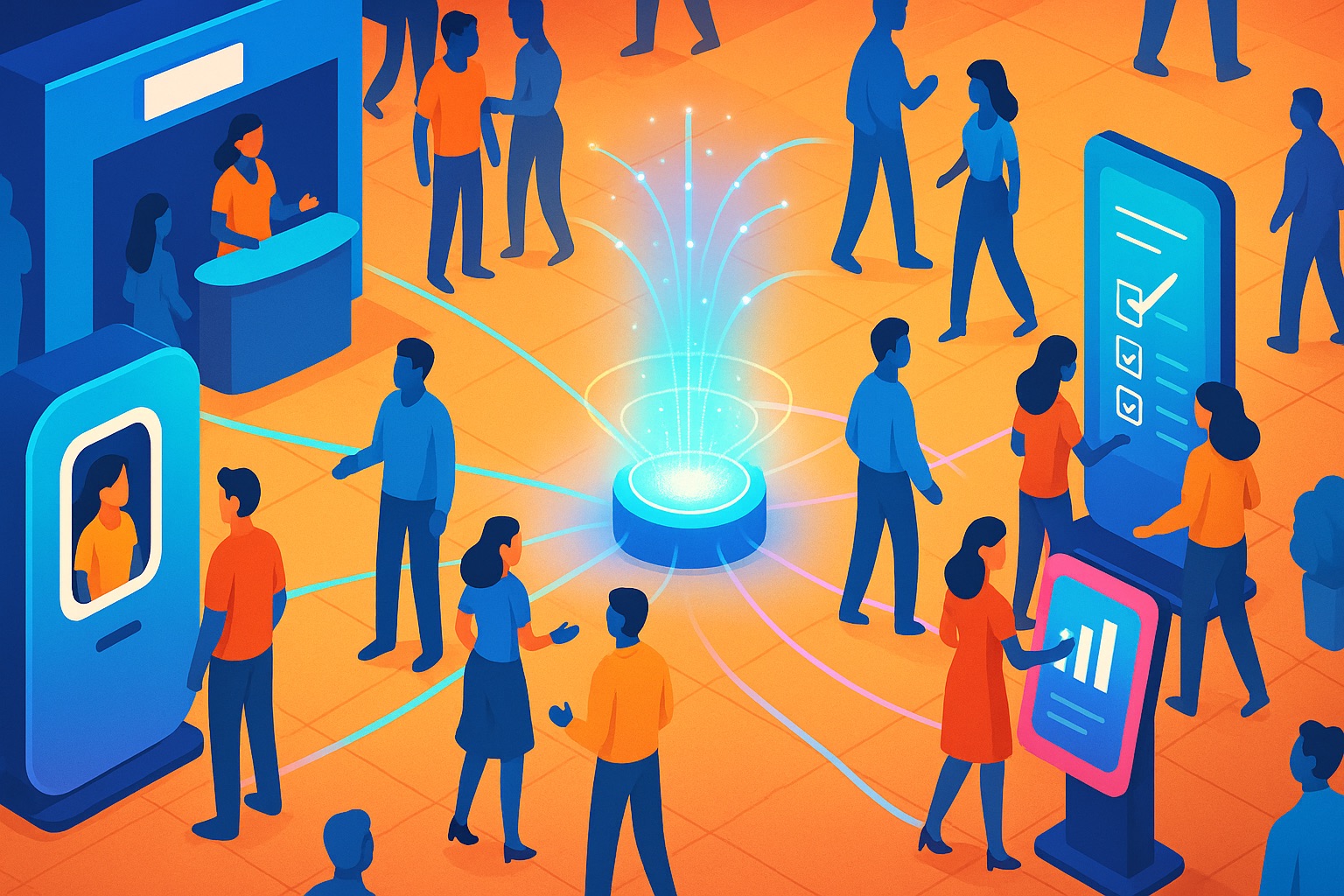








-p-500.webp)



.jpeg)






